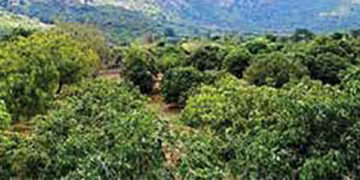Blitz Bureau
NEW DELHI: INDIA has achieved a significant milestone in global forest statistics by advancing to the ninth position worldwide in terms of total forest area, according to the Food and Agriculture Organisation (FAO)’s Global Forest Resources Assessment (GFRA) 2025, released recently.
In the previous assessment, India was ranked 10th. The country has also maintained its third position globally in the annual net gain of forest area. According to the GFRA 2025, the world’s total forest area stands at approximately 4.14 billion hectares, accounting for about 32 per cent of the total land area, which is roughly 0.5 hectares of forest per person. Globally India accounts for approximately 72,739 thousand hectares of forest area which is roughly 2 per cent of the world total.
Bamboo and rubber
Europe has the largest forest area, accounting for 25 per cent of the world’s total. South America has the highest proportion of forest, at 49 per cent of the total land area. More than half (54 per cent) of the world’s forests are in only five countries – Russia, Brazil, Canada, US and China The total bamboo resource globally is estimated to be 30.1 million ha, of which 21.2 million ha (70 per cent) is in Asia, with India accounting for 11.8 million hectares. In rubber plantation, India ranks 5th globally with 831 thousand hectares, contributing to a global total of 10.9 million ha. India and Indonesia together contribute around 70 per cent of the global agroforestry area, which is about 55.4 million hectares.
India reported a net forest gain over 1990-2025, with expansion outweighing losses due to afforestation efforts. This was the result of reduced deforestation in some countries and the expansion of forest area in some others. As per GFRA, the world’s forests acted as a net carbon sink during the 2021-2025 period, sequestering 3.6 billion tonnes of carbon dioxide (Gt CO2) annually on forest land. During the period, global emissions due to net forest conversion (a proxy of deforestation) amounted to 2.8 Gt CO2, partially counterbalancing the forest sink effect.
As a result, forest carbon stocks increased overall, removing 0.8 Gt CO2 annually from the atmosphere during the 2021–2025 period. Such net removals were nearly twice as large (1.4 Gt CO2) a decade earlier.
Between 2021 and 2025, forest carbon sinks were strongest in Europe and Asia (removing 1.4 Gt CO2 and 0.9 Gt CO2 per year, respectively). India ranked fifth among the top global carbon sinks, with its forests removing 150 Mt of CO2 per year during 2021–2025.
India’s forest status
As per the India State of Forest Report (ISFR) 2023, India’s total forest cover is 7,15,343 sq km, which is 21.76 per cent of the country’s geographical area. Area wise top three states having largest forest cover are Madhya Pradesh, Arunachal Pradesh, and Chhattisgarh. India’s mangrove cover stands at approximately 4,992 sq. km, concentrated mostly in Andaman & Nicobar Islands, Gujarat, Maharashtra, and West Bengal. The country has 106 national parks, 573 wildlife sanctuaries, 115 conservation reserves, and 220 community reserves. Among the key Initiatives taken by the Government to enhance forest cover are: Budgetary allocations: In the 2025- 26 Budget, the Government allocated Rs 3,412.82 crore, a 9 per cent increase from the revised estimate of Rs 3,125.96 crore in 2024–25.
Green India Mission: Launched in February 2014, the GIM seeks to expand forest and tree cover, restore ecosystems, and enhance biodiversity and carbon sinks. It aims to expand forest and tree cover by 5 million hectare. National afforestation: The objective of the programme is regeneration of degraded forest and adjoining areas in the country.
Mission LiFE: The United Nations adopted a resolution on sustainable lifestyles, based on the precepts of Mission LiFE, (Lifestyle for Environment). MeriLiFE portal: Launched to promote individual and collective action for sustainable living.
Ek Ped Ma Ke Naam: An emotional call to encourage tree plantation by linking it to the love for one’s mother or motherland.
India’s consistent efforts in expanding forest cover, promoting sustainable forestry, and implementing missions like GIM underscore its commitment to environmental conservation and global climate action.
































